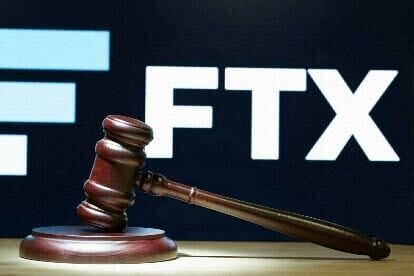FTX, a defunct crypto exchange, has received strong preliminary approval for its amended reorganization plan from creditors entitled to vote. The plan, which aims to fully compensate non-governmental creditors by paying 100% of their bankruptcy claims, has garnered more than 95% of creditor votes and represents 99% of the claims by value. The reorganization plan is set to be finalized by October 7 and has received backing from customer classes of both FTX US and FTX.com. FTX’s Chief Restructuring Officer and CEO highlighted the plan’s innovative structure and its resolution of disputes with various governmental and private stakeholders. However, some FTX customers have opposed the plan, citing concerns about how their cryptocurrency holdings are valued and the tax implications of being reimbursed in cash.
FTX has faced challenges on its path to reorganization, with creditors initially objecting to the exchange’s repayment plan. Concerns were raised about potential taxable events resulting from cash repayment rather than digital assets, disputes over asset valuation, and the distribution of customer assets by the estate led by John J. Ray III. In response to these objections, FTX sought creditor votes on a liquidation plan to wind down payments and compensate customers. Delaware Judge John Dorsey authorized FTX’s bankruptcy advisors to solicit creditor votes, seeking feedback from those who had not previously engaged with the repayment plan. This paved the way for FTX’s reorganization plan, which carries significant financial implications and involves complexities due to the exchange’s legal challenges.
Reports have suggested that FTX may offer customers 119% of their assets’ value as of the filing date for Chapter 11, with other creditors potentially receiving up to 143% of their owed assets. However, customers have demanded higher repayments due to the recent spike in cryptocurrency prices, leading to objections to the proposed repayment terms. The restructuring process is further complicated by FTX’s legal troubles, including its founder and former CEO’s sentencing to 25 years in prison and a fine of $11 billion for financial fraud. Additionally, FTX and its affiliate, Alameda Research, reached a settlement with the Commodity Futures Trading Commission (CFTC) requiring them to repay $12.7 billion to creditors. These challenges contribute to the complexity of FTX’s reorganization efforts and the ongoing disputes with creditors and stakeholders.
Despite the challenges and objections raised by some customers and creditors, FTX’s reorganization plan has received broad support, indicating a strong likelihood of surpassing the necessary thresholds for approval under U.S. bankruptcy law. The overwhelming approval from creditors, including customer classes from both FTX US and FTX.com, signals a positive outcome for the plan’s implementation. The innovative structure of the plan, as highlighted by FTX’s Chief Restructuring Officer and CEO, is aimed at resolving complex disputes with various governmental and private stakeholders. The finalization of the reorganization plan by October 7 will provide a roadmap for compensating non-governmental creditors at 100% of their bankruptcy claims plus interest, signaling progress in FTX’s efforts to address its financial obligations and move towards reorganization.
FTX’s reorganization efforts come amidst a backdrop of legal challenges, financial implications, and objections from some customers and creditors. The exchange’s journey through bankruptcy proceedings has been marked by hurdles and negotiations with stakeholders seeking repayment for their assets. The ongoing restructuring process, coupled with the legal issues surrounding FTX and its founder, adds layers of complexity to the reorganization efforts. Despite these challenges, the preliminary approval of the amended reorganization plan and the broad support from creditors demonstrate a positive step towards resolving FTX’s financial obligations and addressing the concerns of those impacted by the exchange’s closure. The path to finalization of the reorganization plan by October 7 will likely involve further discussions, negotiations, and resolutions to ensure all parties are adequately compensated and disputes are resolved in a fair and transparent manner.


